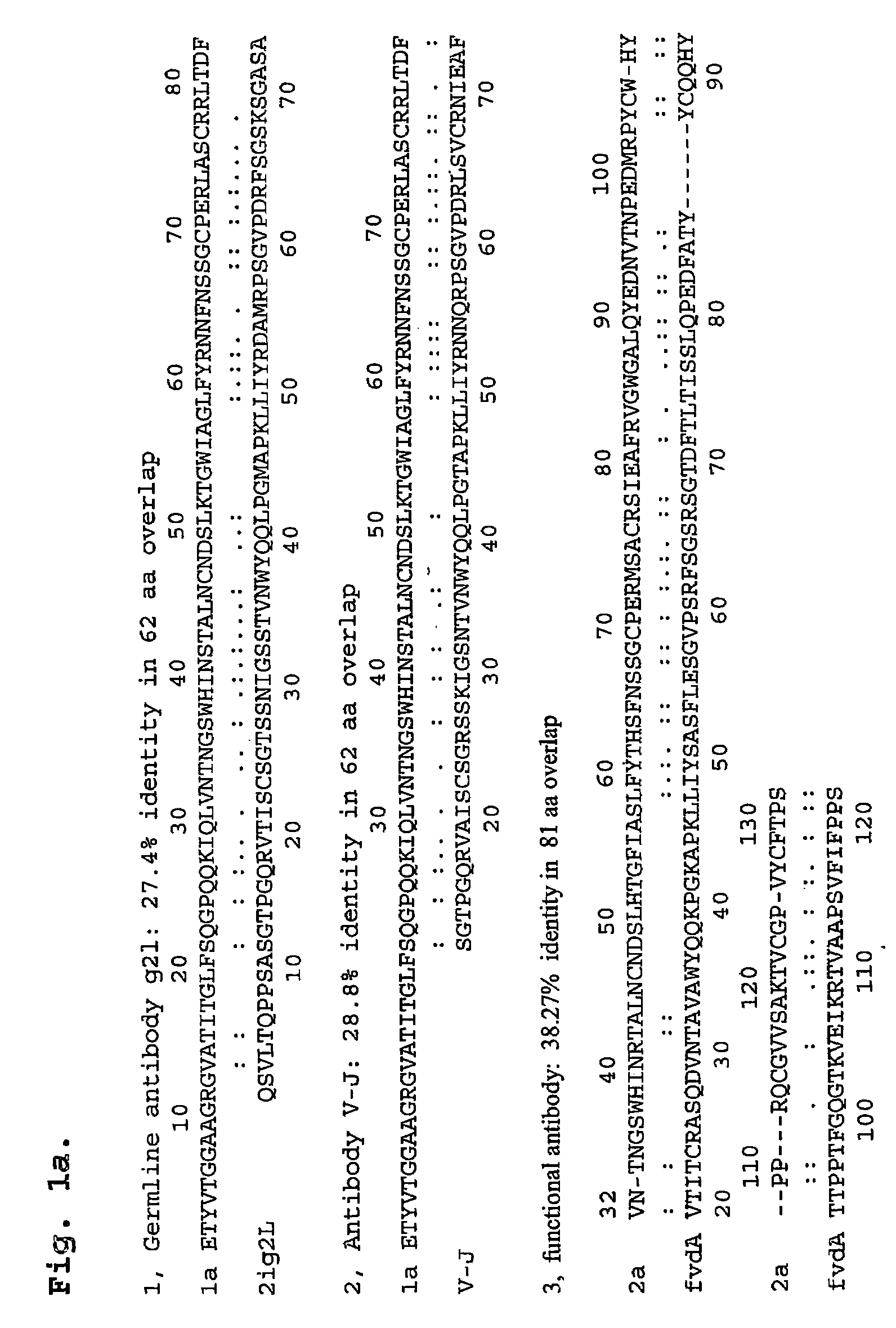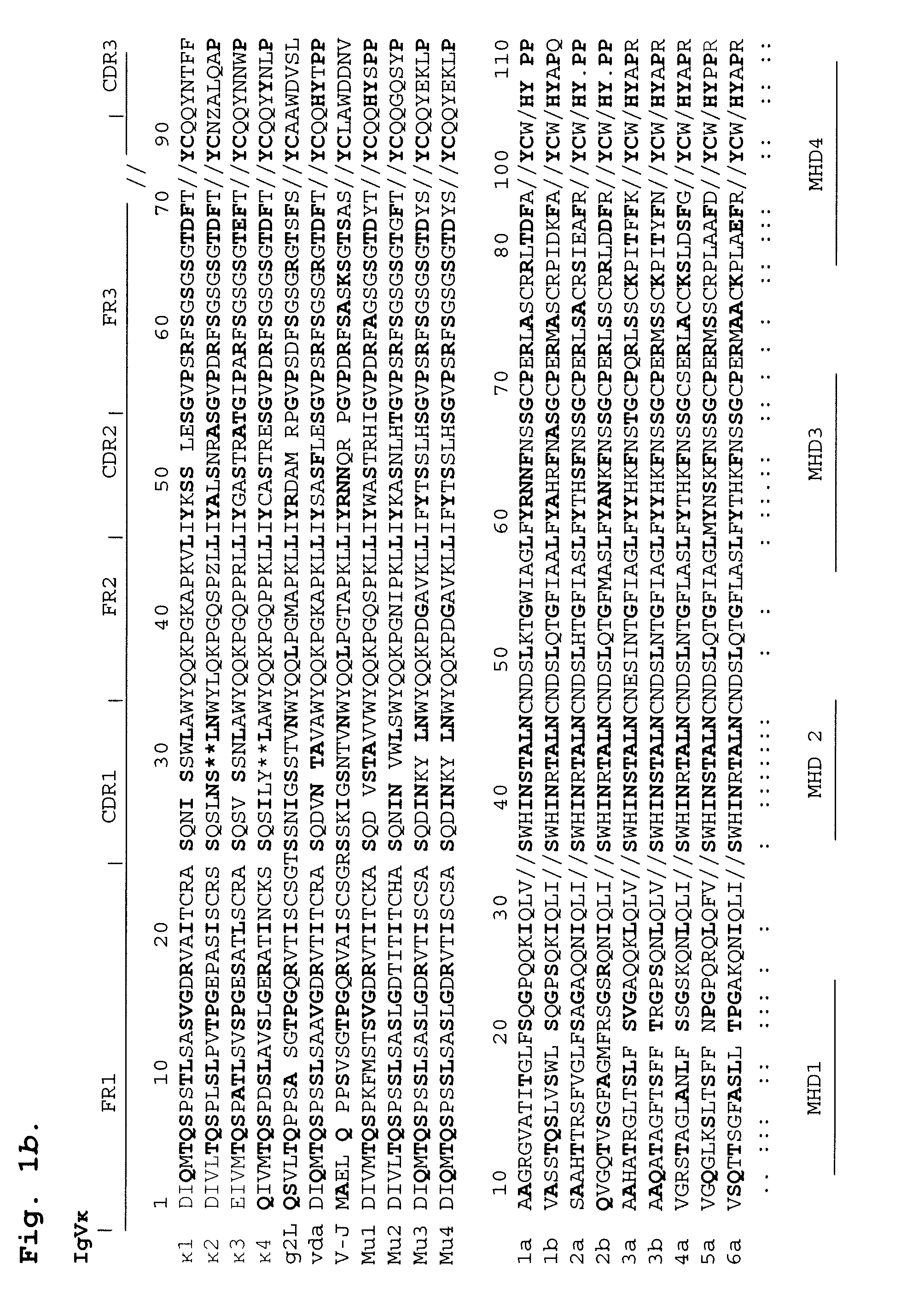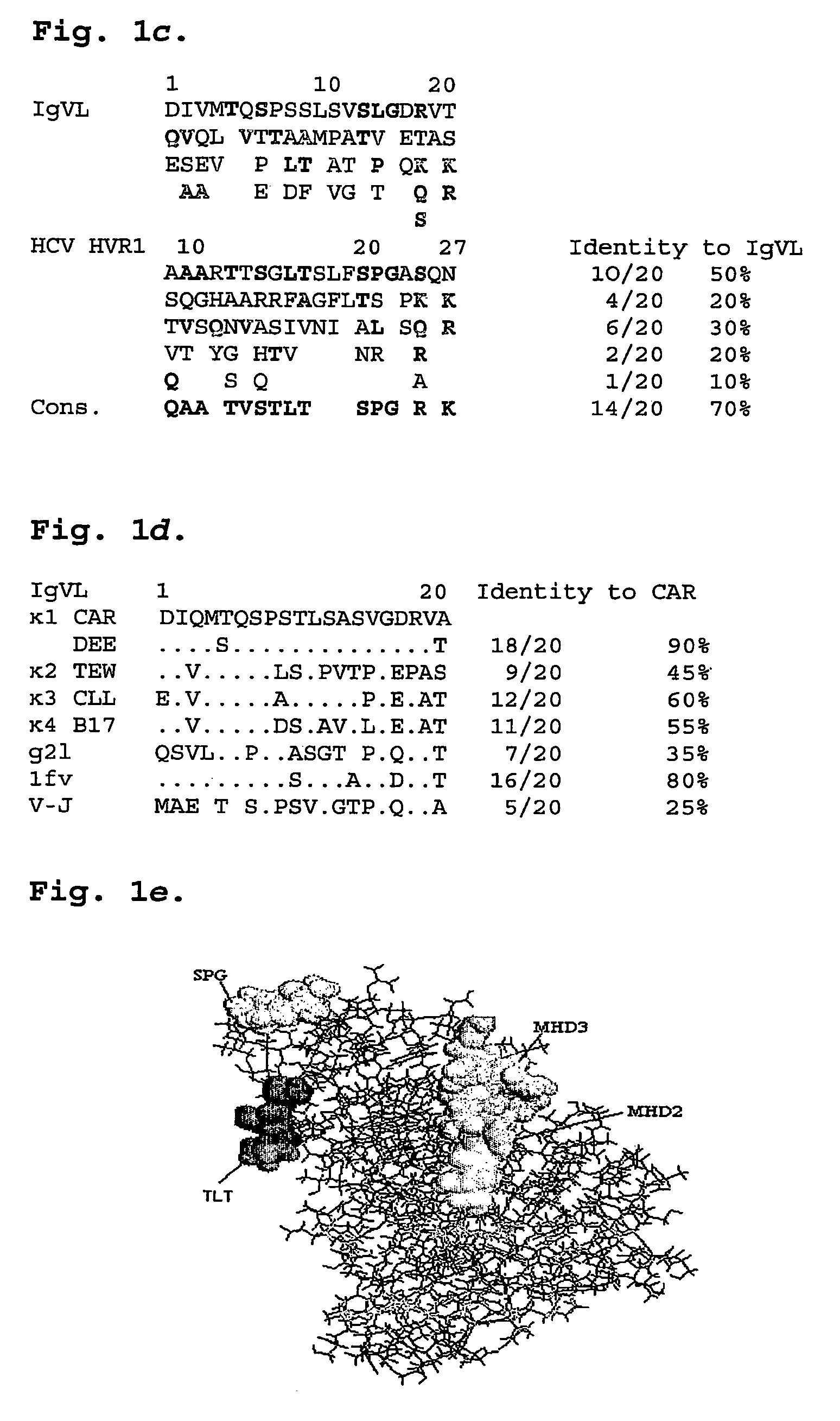Detection, characterization and treatment of viral infection and methods thereof
a viral infection and characterization technology, applied in the field of detection, characterization and treatment of viral infections, can solve the problems of limited availability of treatment, difficult diagnosis, debilitating effect of viral infections on the economic output of society, etc., and achieve the effect of improving sensitivity and specificity
- Summary
- Abstract
- Description
- Claims
- Application Information
AI Technical Summary
Benefits of technology
Problems solved by technology
Method used
Image
Examples
example i
Molecular Mimicry by HCV
[0113]To date, the mechanism for HCV persistence in infected individuals has been unclear. Viral replication during acute infection leads to a high frequency of amino acid substitutions in HVR1 that generates a complex mixture of genetic variants, termed a quasispecies. This genetic diversity translates into different amino acid sequences and thus, altered epitopes, resulting in different levels of recognition of quasispecies members by the host immune system6,7. For example, some epitopes within HVR1 are not recognized by the immune response and the corresponding variants that persist after seroconversion are termed antibody escape mutants or persistent quasispecies. It has not been previously known why these escape mutants are not subsequently recognized by the immune system. As a result, prior to the present invention, effective prevention, diagnosis and treatment for persistent HCV infection has not been available.
[0114]Amino acid mutation at the amino te...
example ii
Parallels with HIV
[0155]HCV virus infection in humans primarily occurs in hepatocytes and liver macrophages, however HCV RNA is also often found in lymph nodes and the pancreas. The evolutionary biology of HCV may have parallels with that of human immunodeficiency virus (HIV) that also causes persistent infections where the virus is present as a heterogeneous and varying population in the infected individual. Of more direct relevance to our interpretation of genetic variation in HCV as it relates to disease is the observation that most of the genetic variation involves the hypervariable regions in the gp120 receptor protein. HIV biology is dependent on the cell tropism of HIV that is controlled by binding of virus to the CD-4 receptor in conjunction with co-receptors on macrophages and T cells. Thus macrophage tropic HIV binds the CCR5 chemokine receptor whereas T-cell tropic HIV virus binds the CXCR5 chemokine receptor. The receptor specificity of HIV shifts during persistent infec...
example iii
Molecular Mimicry by HTLV-I / II
[0159]Human T-Lymphotropic virus type I (HTLV-I) was the first human retrovirus isolated in 1980 and is known to cause adult T-cell leukemia / lymphoma, and tropical spastic paraparesis / HTLV-I associated myelopathy (TSP / HAM) (Poiesz, B. J. Proc. Natl. Acad. Sci. U.S.A 77, 7415-7419 (1980). This retrovirus can be transmitted through blood transfusion, sexual activity, mother-to-child transmission, and intravenous drug abuse. HTLV type II (HTLV-II) is a closely related retrovirus, isolated in 1982, having similar structural features, antigenic properties, genomic organization and pathogenicity to HTLV-I (Chen et al. Nature 305, 502-505 (1983); Rosenblatt et al. Leukemia 6 Suppl 1, 18-23 (1992); Thorstensson et al. Transfusion 42, 780-791 (2002)).
[0160]In accordance with the present invention, the role of molecular mimicry by HTLV-I was investigated as herein described. As illustrated in Tables 5A, 5B, and 5C, many host protein domains sequence elements (HPD...
PUM
| Property | Measurement | Unit |
|---|---|---|
| time | aaaaa | aaaaa |
| frequencies | aaaaa | aaaaa |
| nucleic acid testing | aaaaa | aaaaa |
Abstract
Description
Claims
Application Information
 Login to View More
Login to View More - R&D
- Intellectual Property
- Life Sciences
- Materials
- Tech Scout
- Unparalleled Data Quality
- Higher Quality Content
- 60% Fewer Hallucinations
Browse by: Latest US Patents, China's latest patents, Technical Efficacy Thesaurus, Application Domain, Technology Topic, Popular Technical Reports.
© 2025 PatSnap. All rights reserved.Legal|Privacy policy|Modern Slavery Act Transparency Statement|Sitemap|About US| Contact US: help@patsnap.com



